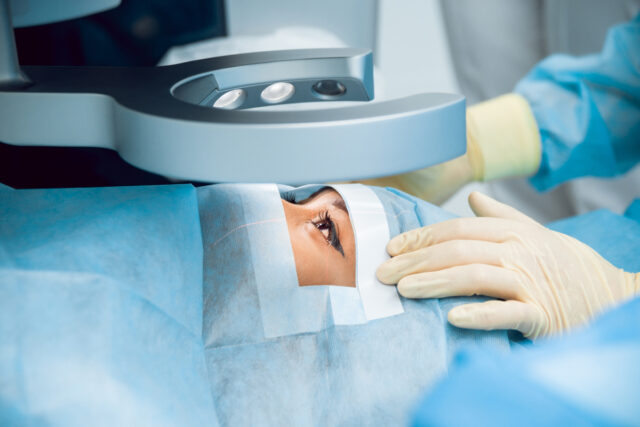
Medicine has advanced so much that improving the quality of our life is not that difficult anymore, meaning that there are many procedures and treatments that can be of much help with many common health issues.
The same is with our vision, as what once was a huge problem that required a lot of time to deal with, today easily dealt with, and the same is with refractive lens exchange surgery.
Namely, this treatment is not that difficult, and the recovery process doesn’t last for that long, but many are still hesitant to try it, mostly because of a lack of info, which is something we will further focus on and discuss.
About the Surgery

First of all, we need to explain the surgery process and why it is one of the first choices for people older than 65 when it comes to vision correction. It has a lot of benefits, and since the entire surgical procedure lasts less than half an hour per eye, it is a perfect way to enhance your vision without thinking about glasses or lenses whenever you go.
The same procedure is used for removing the cataract, but in this case, it is done to enhance our eyesight and make our life much easier. During this procedure, the specialist removes the natural lens from our eyes and replaces them with implants.

Even though it sounds pretty scary, the entire operation actually doesn’t last that long, and there are various types of these implants, which means there is a perfect choice for each person, so there is no need to worry, as the surgeon will recommend the best ones.
In general, asking for a consultation before taking any action is a must, as it is the only way to be sure that you will get the best possible treatment and also that everything will go flawlessly.
The Procedure

Medical professionals will need to enlarge your pupils, which is easily done with eye drops, and the most important is that it does not hurt at all. Once the pupils are enlarged, the vision will become a little blurry, but there is no need to worry, as it is completely normal at this stage of the procedure.
After enlarging pupils, it is time for anesthetic, which is also taken in the form of eye drops, and its role is to block the pain during the surgery. Many people are scared that the anesthetic will not work or that the surgeon will start the procedure before it starts working, but there is no need for that, as it is impossible to happen.
Keep in mind that these are educated professionals with a ton of experience with this procedure, meaning that you are in the right hands and that there is no room for any kind of mistake.
On the other hand, being nervous about the procedure is a normal reaction that most people show, but for those who feel too stressed, doctors will prepare a relaxant and inject it to avoid panic attacks and keep them calm.
How to Prepare

The best thing about refractive lens exchange surgery is that there is no need for some special preparation before it, which means you do not need to spend a few days in the hospital.
Spending time in the hospital usually makes people nervous and anxious, and the fact that it is not necessary for this surgery makes it a preferred choice when it comes to vision problems.
Yes, regardless of what some might think, spending time in the hospital is always stressful, even when it is about some small health problem or a procedure that needs to be done. That is yet another reason why this type of surgery is great for patients, as it doesn’t require spending any more time than necessary at the hospital.
All you need is to get to the clinic at the appointed time, relax and think that you will be home by the end of the day, and let doctors do their job.
The Recovery Process

Since the incision that needs to be made at the eye surface is microscopic, there is no need for stitches, and because of that, the entire recovery process is much easier. Overall, the medicine has advanced so much that this procedure doesn’t require any extra recovery time, and in most cases, a patient is fully recovered after a week or two.
This surgery cannot be performed without the microscope as it cannot be seen with the bare eye. Once the natural lens is removed, the surgeon uses a special gel to help them place the implant precisely by watching through the microscope all the time.
This gel needs to be washed out when the procedure is over with sterile water and antibiotics, or it can lead to infections and slower recovery. All in all, with all the precautionary measures, the procedure is not that demanding or scary, as, in reality, the benefits of such surgery surpass any possible side effects that might occur.
How to Manage the Pain After the Procedure?

Once again, eyedrops come to the rescue, as in most cases, they are enough to deal with any kind of issue after the procedure.
Of course, everything is carefully monitored by the medical professional in charge, as they will have the best insight into how the procedure went and what can be expected in the recovery process, and every other action during the recovery process mostly depends on the medical professionals.
Another common prescription for patients after the surgery is paracetamol or acetaminophen, but that’s mostly reserved for special occasions or for children, as they have to use optimal doses of minor analgesics by an adequate route of administration in order to achieve timely and efficient analgesia.
Patience and avoiding spending too much in front of the TV are the best possible things one can do after the surgery, as by doing so, you can speed up the recovery process, along with not rubbing your eyes, which is something of a must really.









